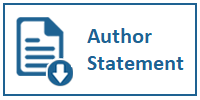Enhancing Sales Strategies In Prime Market Retail Business Using Tuned Gradient Boosting
DOI:
https://doi.org/10.31937/si.v15i1.3595Abstract
In the retail sector, comprehending customer behavior and employing effective customer segmentation is pivotal for refining marketing strategies and augmenting profits. This study delves into predictive modeling for customer segmentation at Prime Market, a prominent retail entity. The research initially yields a classification error rate of 25.10% by employing Gradient Boosting for customer classification. However, through meticulous parameter tuning, this rate dramatically improves to 8.6%, achieving an impressive accuracy of 91.4%. This refined model furnishes invaluable insights into Prime Market's customer segments, enabling the customization of marketing tactics and strategic business approaches. Armed with these insights, Prime Market can make data-driven decisions to enhance customer segmentation accuracy, better comprehend customer preferences, and pinpoint potential avenues for revenue growth. Leveraging advanced data analytics and predictive modeling empowers Prime Market to maintain a competitive edge and deliver its clientele a personalized, gratifying shopping experience.
Downloads
Downloads
Published
How to Cite
Issue
Section
License
Authors retain copyright and grant the journal right of first publication with the work simultaneously licensed under a Creative Commons Attribution-ShareAlike International License (CC-BY-SA 4.0) that allows others to share the work with an acknowledgement of the work's authorship and initial publication in this journal.
Authors are able to enter into separate, additional contractual arrangements for the non-exclusive distribution of the journal's published version of the work (e.g., post it to an institutional repository or publish it in a book), with an acknowledgement of its initial publication in this journal.
Copyright without Restrictions
The journal allows the author(s) to hold the copyright without restrictions and will retain publishing rights without restrictions.
The submitted papers are assumed to contain no proprietary material unprotected by patent or patent application; responsibility for technical content and for protection of proprietary material rests solely with the author(s) and their organizations and is not the responsibility of the ULTIMA InfoSys or its Editorial Staff. The main (first/corresponding) author is responsible for ensuring that the article has been seen and approved by all the other authors. It is the responsibility of the author to obtain all necessary copyright release permissions for the use of any copyrighted materials in the manuscript prior to the submission.















